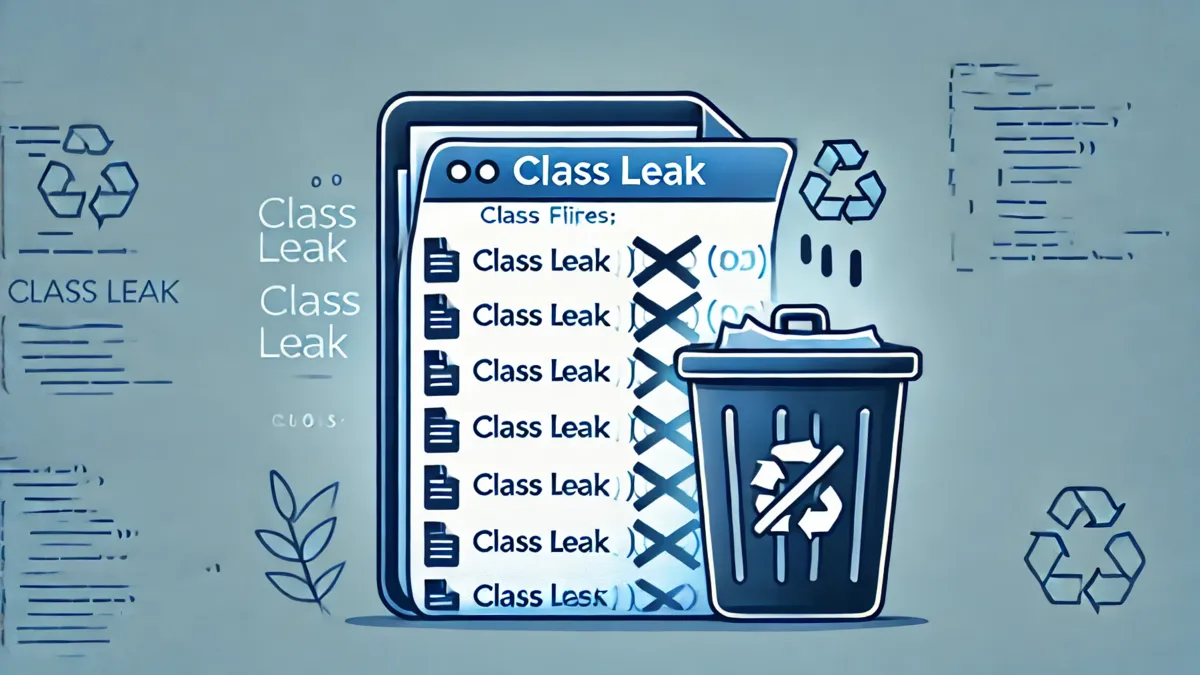
Table of contents
Introduction Class Leak
Class Leak is a tool that identifies unused classes in your project. It helps you to find and remove obsolete and unused code, making your project leaner and easier to maintain.
Installation and setup of Class Leak
The installation is done in Javascript with the following code:
composer require tomasvotruba/class-leak --dev
An initial command could be as follows, for example:
vendor/bin/class-leak check /src /tests
Configuration and customisation of Class Leak
Configuration and customisation of Class Leak
Class Leak can be configured via command line options. Some important options are
--skip-type: To exclude certain classes or interfaces--skip-suffix: To exclude classes with certain suffixes--skip-attribute: To exclude classes with certain attributes
Example:
vendor/bin/class-leak check src --skip-type="App\Contract\SomeInterface" --skip-suffix "Controller"
Use of Class Leak
Class Leak is particularly useful for:
- Cleaning up legacy code
- Identifying obsolete classes after refactoring
- Improving code quality and clarity
A typical workflow could look like this:
- Run Class Leak regularly
- Review the identified unused classes
- Remove the classes or document why they are kept
Integration in CI/CD-Pipelines
Class Leak can be easily integrated into CI/CD pipelines. Here is an example for GitHub Actions:
name: Check for unused classes
on: [push, pull_request]
jobs:
class-leak:
runs-on: ubuntu-latest
steps:
- uses: actions/checkout@v2
- name: Install dependencies
run: composer install
- name: Run Class Leak
run: vendor/bin/class-leak check src

Reach our PHP Consultant specialists
We are experts in PHP and help you to master your digital challenges. Our experienced team supports you with PHP updates, PHP refactoring and advises you remotely on all questions relating to PHP. With our fully automated CI/CD deployments and a robust Docker infrastructure, we take your PHP projects to the next level. Rely on our expertise for reliable and scalable PHP solutions.
Frequently asked questions (FAQ)
What advantages does Class Leak offer?
It saves memory and simplifies the maintenance of your project by eliminating unused classes. This leads to more efficient and easier to maintain projects, especially in large code bases.
When should you use Class Leak?
It is best to use Class Leak as soon as you have reached a certain PHPStan level (at least level 2) in a project. It is particularly useful in larger projects with many dependencies.
Why should I use Class Leak?
Unused classes take up memory and make the code more difficult to maintain. Class Leak helps you keep your code clean and lean by identifying unused classes that can be safely removed.
When does it make sense to use Class Leak?
Class Leak is particularly useful when your project has grown and you have lost track of all the classes. Once you have reached PHPStan Level 2, you can use this tool to avoid unnecessary complexity.
How does Class Leak help my project in the long term?
By removing unnecessary classes, your project remains more maintainable and performs better. It also reduces the likelihood of future developers coming across outdated code that is unnecessarily confusing.
Conclusion
Class Leak is a valuable tool for PHP developers who want to optimise their codebase and keep it maintainable. By using Class Leak regularly, developers can ensure that their code remains lean and efficient, leading to improved code quality and easier maintenance in the long run.
Further resources
Official Class Leak GitHub repository
PHP-FIG standards for best practices in PHP projects
